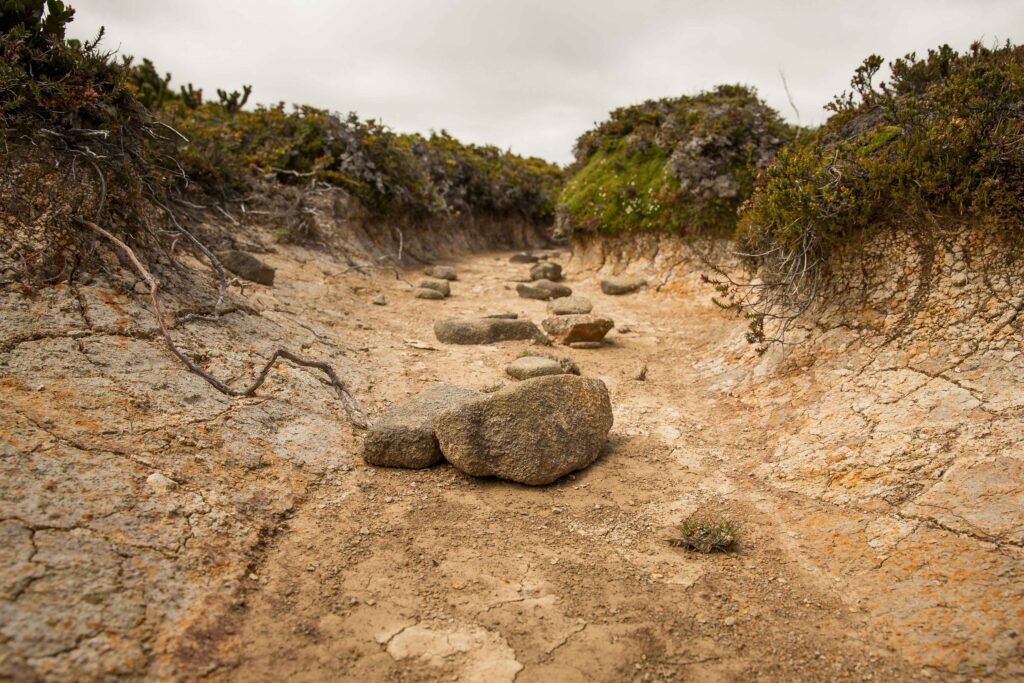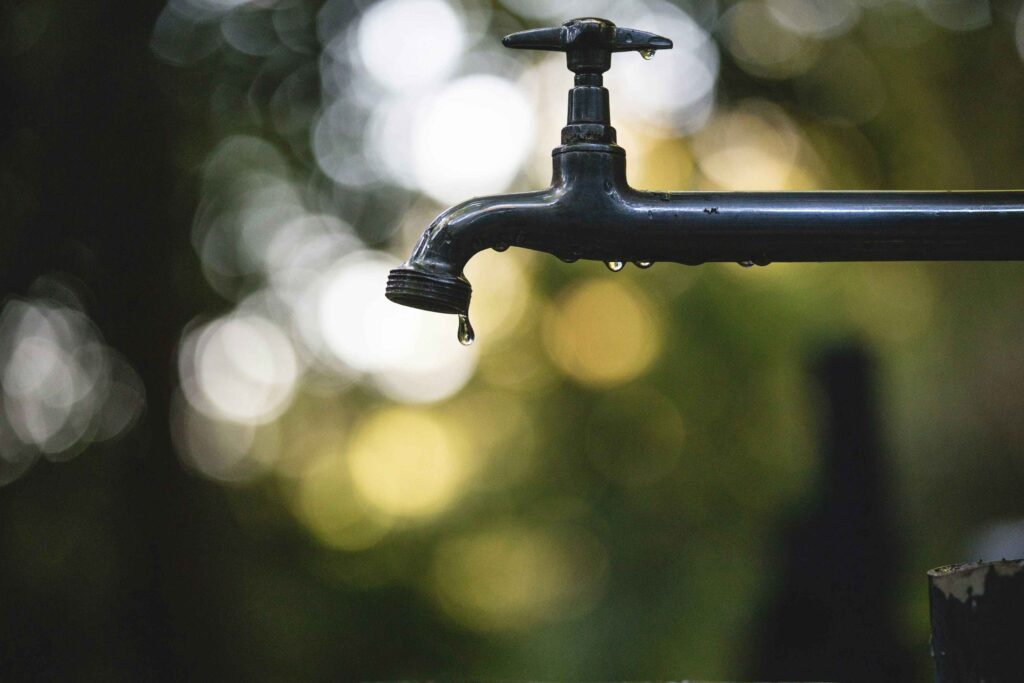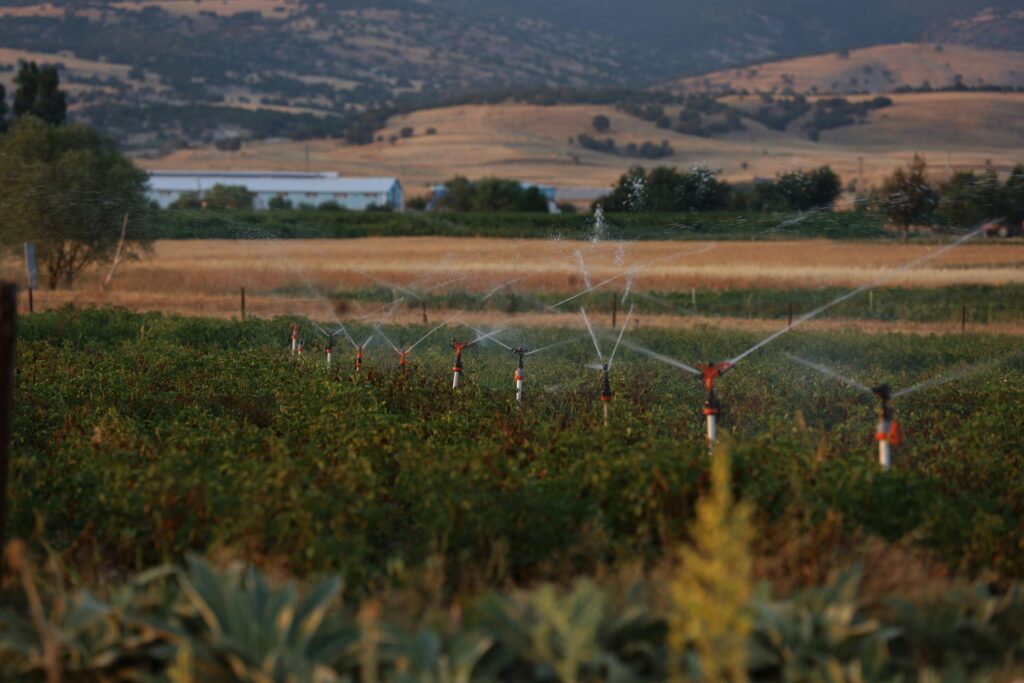A dry dam creates immediate challenges for rural property owners. Water shortages threaten livestock, crops, and household needs. Understanding both practical management steps and legal obligations helps you navigate this difficult situation while protecting your property and staying compliant with Australian water regulations.

Understanding Why Your Dam Might Run Dry
Dams don’t empty overnight. Recognising why yours is running dry helps you respond effectively and prevent future occurrences.
Extended periods without rainfall are the most obvious cause. Australia’s climate includes regular drought cycles. Some regions experience multi-year dry spells that exhaust even well-designed dams.
Evaporation removes significant water volumes, particularly in summer. Open dams in hot climates can lose several millimetres of water depth daily. Over months, evaporation alone can deplete a dam substantially.
Seepage through dam walls or floors causes gradual water loss. Clay-lined dams hold water better than those built on porous soils. Cracks in aging dam walls accelerate seepage rates.
Overuse depletes dams faster than natural inflow replaces water. Large livestock numbers, intensive irrigation, or multiple properties drawing from shared water sources exhaust supplies quickly.
Reduced catchment inflow matters more than most owners realise. Changes in land use, vegetation removal, or upstream water extraction reduce the water flowing into your dam during rain events.
Early warning signs include receding waterlines, exposed dam floors, increased algae concentration, and livestock struggling to access remaining water. Noticing these signs early provides time for proactive management before complete depletion.
Practical Steps to Manage a Dry Dam
Immediate action preserves remaining water and secures alternative sources while you wait for rainfall.
Assess Your Current Water Supply
Calculate how much water remains in your dam. Multiply average depth by surface area to estimate volume. This calculation guides rationing decisions.
Prioritise water use immediately. Livestock drinking water takes precedence over irrigation or other uses. Essential household needs rank second. Discretionary uses stop entirely.
Estimate daily consumption rates for all water uses. Livestock require approximately 40-60 litres daily per adult cattle beast, 5-10 litres per sheep, and similar volumes for other animals. Calculate total daily needs against remaining supply to determine how long your water will last.
This assessment reveals whether you need emergency water sources within days, weeks, or months.
Alternative Water Sources
Multiple alternatives exist when dam water becomes scarce or exhausted.
| Water Source | Suitability | Indicative Cost Range | Considerations |
| Rainwater tanks | Excellent for household/livestock | $1,000-$5,000+ per tank | Requires roof catchment, limited by rainfall |
| Bore water | Good if aquifer available | $5,000-$15,000+ to establish | Requires licensing, quality testing needed |
| Municipal supply | Limited farm use | Connection + usage fees | Usually restricted to household use |
| Water carting | Emergency/short-term | $200-$500+ per load | Ongoing expense, logistically demanding |
| Temporary bladders/tanks | Short-term storage | $500-$3,000+ | Useful during carting, limited capacity |
Note: Costs are estimates only and vary significantly by location and circumstances. Obtain current quotes for accurate budgeting.
Rainwater tanks provide reliable household and livestock water when roof catchment area is adequate. Calculate your roof area and average rainfall to determine potential collection volumes.
Bore water offers independence from surface water but requires geological surveys, drilling costs, and licensing. Water quality testing is essential before use with livestock or irrigation.
Municipal water connections suit properties near town services. Most rural water authorities restrict farm use but allow household and livestock drinking water supply.
Water carting becomes necessary during severe shortages. Costs vary by distance and volume. Establish delivery arrangements early, as cartage services become scarce during widespread drought.
Temporary storage bladders or additional tanks expand capacity when water must be carted or delivered. These prevent constant small deliveries and reduce costs.
Reduce Water Loss
Protecting remaining water extends its usable period significantly.
Cover open water surfaces where practical. Shade cloth or floating covers reduce evaporation by 30-50%. While impractical for large dams, smaller stock water tanks benefit substantially from covering.
Control livestock access carefully. Unrestricted dam access causes fouling, trampling of banks, and increased evaporation through disturbed water. Pump water to troughs instead, maintaining cleaner supply and better control.
Repair leaks immediately. Check pipes, troughs, and taps daily. Small leaks waste thousands of litres weekly.
Reduce irrigation to essential uses only. Prioritise high-value crops or permanent plantings that would die without water. Accept losses on annual crops when water supplies become critical.
Institute water rationing across all uses. Set strict daily limits for non-essential activities. Every litre saved extends your remaining supply.
Plan for Refill
Position your property to maximise capture when rain eventually arrives.
Clear vegetation and debris from dam catchment areas. Obstructions reduce water flow into the dam during rainfall events.
Repair erosion damage around catchment areas. Properly directed water flow ensures maximum dam refill from available rainfall.
Consider water-efficient irrigation methods for future use. Drip irrigation uses 30-50% less water than spray or flood methods while maintaining crop production.
Install additional rainwater collection from buildings. Larger tank capacity means less reliance on dam water during future dry periods.
Legal Considerations When Your Dam Runs Dry
Australian water law is complex and varies significantly by state. Understanding basic obligations prevents legal problems during water shortages. The information below is general educational content only – always verify current regulations with your state water authority for your specific situation.
Understanding Water Rights and Licensing
Water rights in Australia depend on water source, property location, and state regulations. Rules differ substantially across NSW, Victoria, Queensland, and Western Australia.
Surface water in dams may require licensing depending on dam size, water source, and use. Small dams collecting overland flow typically don’t require licences, but thresholds vary by state.
New South Wales requires licensing for dams exceeding certain capacities or located on waterways. Harvestable rights allow unlicensed capture of limited volumes. Check NSW Department of Primary Industries guidelines for your specific situation.
Victoria regulates water capture through catchment management authorities. Domestic and stock water rights generally don’t require licensing, but commercial or irrigation use often does.
Queensland’s water licensing depends on catchment area and intended use. Overland flow dams under specified sizes typically don’t require licensing for stock and domestic use.
Western Australia requires licensing for most surface water extraction. Rights vary by catchment and allocation systems.
Don’t assume your dam is automatically legal or that previous owners held proper licences. Verify your current water rights and licensing requirements through your state water authority before relying on any water source.
Compliance Obligations for Water Extraction
When your dam runs dry, you may consider alternative extraction methods. Each carries legal obligations.
Bore water extraction requires licensing in most Australian states. Unlicensed bore pumping risks significant penalties. Licensing ensures sustainable aquifer management and protects other water users.
Extracting water from rivers, creeks, or shared waterways requires specific licences regardless of water scarcity. Drought doesn’t suspend these requirements.
Pumping from neighbouring properties without permission constitutes theft. Water trading or sharing arrangements must be documented and comply with state regulations.
During declared droughts, temporary water restrictions may apply even to licensed extractions. Water authorities issue specific directions about permitted use during emergency periods.
Environmental Considerations
Dry conditions intensify environmental obligations rather than suspending them.
Native species rely on remaining water during droughts. Completely draining shared waterways harms downstream ecosystems and may violate environmental protection laws.
If your dam connects to natural waterways, maintain minimum flows for environmental purposes. Authorities can prosecute for environmental damage caused by water extraction.
Unauthorised water diversion from streams or rivers attracts severe penalties. Temporary diversions during drought require proper licensing and approval.
Failing to maintain stock and domestic reserves for downstream users may breach your water licence conditions.
Seek advice from your local catchment management authority before making decisions that affect shared water resources or connected waterways. They provide current information specific to your catchment and circumstances.
Long-Term Drought Management Strategies
Proactive planning reduces vulnerability to future water shortages.
Build larger dams or add supplementary storage. Additional capacity provides a buffer during dry periods. Consider off-stream storage that captures water during flows without affecting waterway health.
Calculate optimal dam size based on historical rainfall patterns, catchment area, and water use requirements. Undersized dams cause recurring shortages.
Invest in comprehensive rainwater harvesting from all buildings. Large tank capacity reduces dam dependence during normal rainfall years, preserving dam water for drought periods.
Improve soil moisture retention across your property. Contour banks, swales, and strategic vegetation slow water movement and increase soil infiltration. Mulching reduces evaporation from soil surfaces.
Diversify crops or adjust livestock numbers to match sustainable water availability. Properties in drought-prone regions benefit from water-efficient enterprises rather than water-intensive operations.
Consider drought-tolerant crops or livestock breeds adapted to low water conditions. These enterprises maintain productivity during dry periods without exhausting water supplies.
Establish relationships with water carting services before emergencies arise. Knowing reliable suppliers and costs helps you respond quickly when shortages develop.
Join local landcare or catchment management groups. These organisations provide drought planning resources, share management strategies, and offer community support during difficult periods.
Common Mistakes to Avoid
Several errors compound difficulties when dams run dry.
Ignoring water rights or licensing requirements creates legal liability. Assuming you can extract water from any source on your property without checking regulations leads to penalties and enforcement action.
Relying solely on dam water without backup sources creates vulnerability. Properties with only dam water face crisis when drought strikes. Diversified water sources provide resilience.
Overestimating dam capacity causes planning failures. Many owners incorrectly calculate their dam’s volume or catchment efficiency. Professional surveys provide accurate capacity figures.
Waiting until complete depletion before seeking alternatives leaves no margin for delays. Arrange backup water sources while significant dam water remains.
Ignoring early warning signs wastes the opportunity for proactive management. Receding waterlines should trigger immediate action, not be dismissed as temporary seasonal variation.
Failing to maintain dams during wet periods reduces their effectiveness when water becomes scarce. Regular maintenance of walls, spillways, and catchment areas ensures optimal performance when needed most.
Resources and Tools for Dam Management
Numerous free resources help Australian property owners manage water effectively.
The Bureau of Meteorology provides drought monitoring data, rainfall forecasts, and historical climate information at bom.gov.au. Understanding local rainfall patterns helps plan water management strategies.
State agricultural departments offer water management guides specific to local conditions:
- NSW Department of Primary Industries publishes water licensing guides and farm dam resources
- Agriculture Victoria provides irrigation and water efficiency information
- Queensland Department of Agriculture and Fisheries offers drought management strategies
- Western Australia’s Department of Primary Industries and Regional Development has water resource guides
Local catchment management authorities provide region-specific advice on water rights, environmental obligations, and sustainable management practices.
Online calculators help estimate dam capacity and livestock water requirements. These tools support accurate planning and resource allocation.
Local rural supply stores often provide practical advice on water management equipment, tank sizing, and pump selection for alternative water sources.
Conclusion
Managing a dry dam requires both immediate practical action and understanding of legal water rights. Assessing remaining supply, securing alternatives, and reducing water loss protects your operation during shortages.
Australian water regulations exist to ensure sustainable use and protect shared resources. Familiarise yourself with your state’s requirements before water shortages create urgent decisions. Compliance protects you legally while supporting environmental and community water needs.
Long-term drought resilience comes from proactive planning. Adequate storage, diversified water sources, and water-efficient practices reduce vulnerability to future dry periods. Properties in drought-prone regions need water security strategies built into their fundamental design.
Review your water security annually, particularly before summer or during developing dry conditions. Early action provides more options and reduces crisis management. Understanding both the practical steps and legal framework empowers you to manage water shortages effectively while protecting your property and staying compliant.


